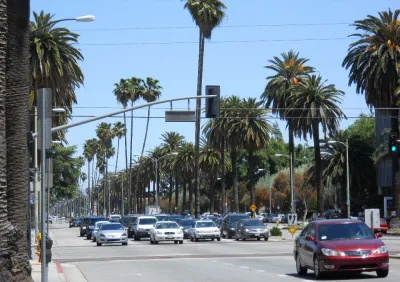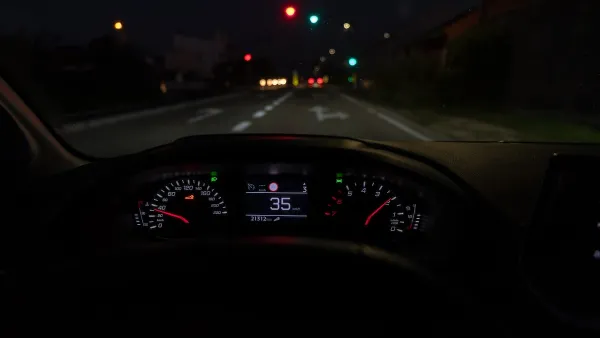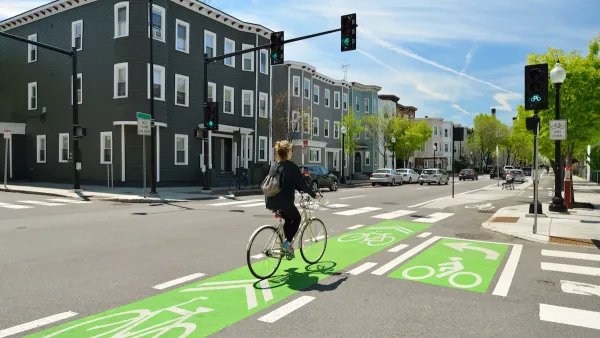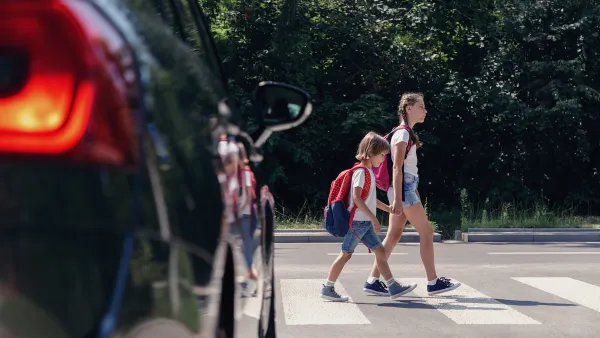Author Jeff Speck discusses the progress made since he first wrote Walkable City–and how far we still have to go to build streets that are safe for all.

With the tenth anniversary of Walkable City coming up, Governing's Jake Blumgart talks with author Jeff Speck "about the stickiness of 2020’s street reforms, why the traffic engineering profession is so resistant to reform, and how remote work can boost urban fortunes."
Speck has seen a lot of change since he first wrote Walkable City, including the mainstreaming of New Urbanism. "Intellectually, and in terms of platforms you see among progressive politicians, there has been a lot of ground gained since 2012," he admits. "But it’s still super hard to get these things done, as we’re seeing now with the reversion of some of these COVID-19 amenities back to the way they were before. Typically, a minority of people who speak loudly are pretty effective in overruling majority public opinion in favor of more walkable places."
When it comes to fears that the many city dwellers who bought cars during the pandemic will add to urban congestion, Speck says "[t]he number of cars on the street is an outcome of the number of lanes we put on the street in congested cities. The number of cars that we see in our cities will be determined by people’s willingness to put up with congestion, not by any other factor." Additionally, "[a]s people come back to transit, but also continue to take advantage of Zoom, you’re going to see an equilibrium emerge which hopefully means fewer car trips than before."
Despite the proven link between widened roads and increased traffic known as induced demand, Speck says, the engineering establishment hasn't caught up, with "maintenance" projects easily turning into widening projects. "Often, fixing a road is a Trojan horse for widening the road." According to Speck, part of the confusion about pedestrian safety "surrounds the fact that street design as a profession evolved out of highway design. The manual that all the engineers use has 'highway' in its title, even though it’s used to design local streets. What makes a highway safe is absence of potential for conflict, absence of friction. That’s the opposite of what makes a street safe."
Speck also discusses the importance of slowing cars through reversing one-way streets, the institutional barriers to reducing or eliminating parking requirements, and the importance of creating truly pedestrian-friendly spaces.
FULL STORY: Vehicles Are Still Firmly in Control of City Streets

Analysis: Cybertruck Fatality Rate Far Exceeds That of Ford Pinto
The Tesla Cybertruck was recalled seven times last year.

National Parks Layoffs Will Cause Communities to Lose Billions
Thousands of essential park workers were laid off this week, just before the busy spring break season.

Retro-silient?: America’s First “Eco-burb,” The Woodlands Turns 50
A master-planned community north of Houston offers lessons on green infrastructure and resilient design, but falls short of its founder’s lofty affordability and walkability goals.

Test News Post 1
This is a summary

Analysis: Cybertruck Fatality Rate Far Exceeds That of Ford Pinto
The Tesla Cybertruck was recalled seven times last year.

Test News Headline 46
Test for the image on the front page.
Urban Design for Planners 1: Software Tools
This six-course series explores essential urban design concepts using open source software and equips planners with the tools they need to participate fully in the urban design process.
Planning for Universal Design
Learn the tools for implementing Universal Design in planning regulations.
EMC Planning Group, Inc.
Planetizen
Planetizen
Mpact (formerly Rail~Volution)
Great Falls Development Authority, Inc.
HUDs Office of Policy Development and Research
NYU Wagner Graduate School of Public Service




























